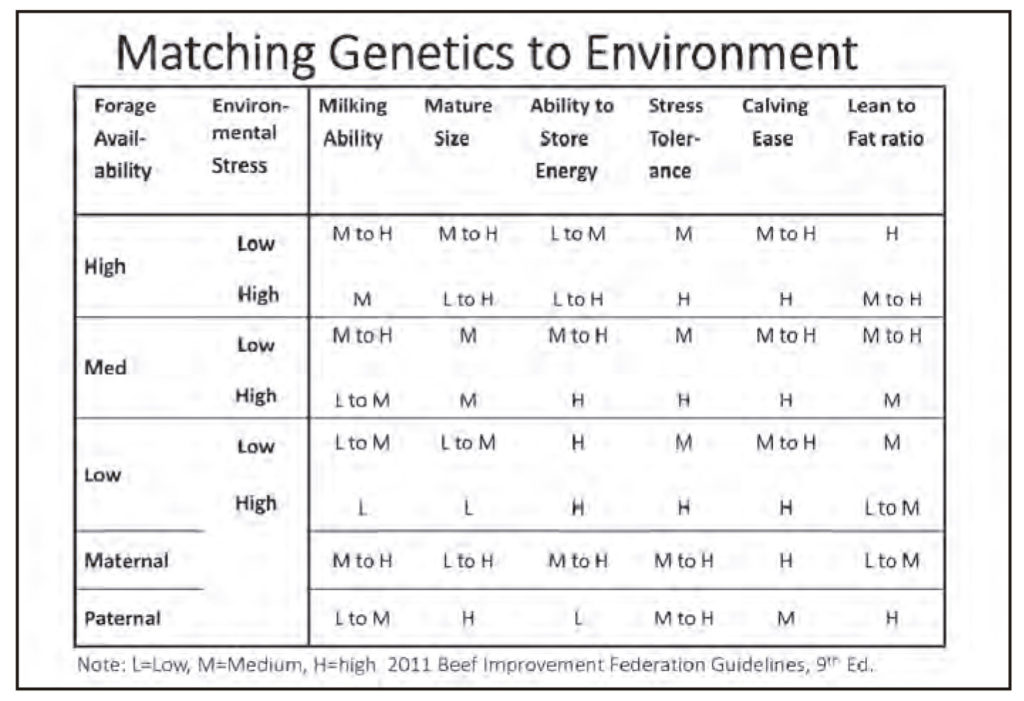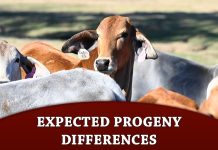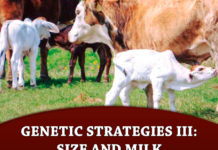By: Dr. Joe C. Paschal, Retired Extension Livestock Specialist and Professor Emeritus.
 I want to begin this article by expressing my sincerest appreciation for the last 18 months of dedicated service given to the Brahman breed by Mr. A. J. Knowles, your now former ABBA Director of Breed Improvement. I hired A. J. and charged him with promoting the Brahman breed, streamlining the SNP genetic reporting, improving the Brahman EPD, and bringing genomically enhanced EPD to ABBA. All of which he accomplished in his tenure and of course much more including working with individual breeders to help them understand performance recording, commercial producers to promote the F1 female, and initiating 11 research projects at seven universities. In addition, ABBA had over a 100% increase in ultrasound scans for carcass merit and the bull gain test includes measures of feed efficiency. It is very unfortunate that ABBA decided to terminate his employment.
I want to begin this article by expressing my sincerest appreciation for the last 18 months of dedicated service given to the Brahman breed by Mr. A. J. Knowles, your now former ABBA Director of Breed Improvement. I hired A. J. and charged him with promoting the Brahman breed, streamlining the SNP genetic reporting, improving the Brahman EPD, and bringing genomically enhanced EPD to ABBA. All of which he accomplished in his tenure and of course much more including working with individual breeders to help them understand performance recording, commercial producers to promote the F1 female, and initiating 11 research projects at seven universities. In addition, ABBA had over a 100% increase in ultrasound scans for carcass merit and the bull gain test includes measures of feed efficiency. It is very unfortunate that ABBA decided to terminate his employment.
Years ago, one of my former colleagues and mentor, Dr. Stephen P. (Steve) Hammack, wrote several articles beginning in the 1990s on cattle breeding topics. As these were expanded, they came to be called Texas Adapted Genetic Strategies (TAGS). Eventually the series of 10 included topics ranging from breeds (uses, origins, and characteristics), size (weight and frame), milk, Expected Progeny Differences (EPDs), to carcass merit, and others. Beginning sometime in the 2000s he and I (along with former colleague Dr. Ron Gill on two items) revised all 10 of these. I will present summaries beginning with this introductory one, to be followed by others.
Influenced by the thinking of Dr. T. C. Cartwright, formerly in the Texas A&M Animal Science Department, and others, TAGS includes consideration not only of production levels and revenues but also associated financial costs. Even though directed at Texas breeders and producers, they can apply to beef cattle production anywhere in the world and can be accessed free at the Texas A&M AgriLife Bookstore agrilifelearn.tamu.edu. I will review them over the next few months and if you want copies of them, email me.

Good management of beef cattle requires a consideration and understanding of production conditions, cattle marketing, cattle types, breeding systems and breeds, and selection of individual animals for genetic improvement.
However, the initial consideration for genetic improvement is NOT genetic, but in understanding the production conditions, including climatic, forage production, and available labor and your management skill. Brahman and Brahman infl uence cattle are well adapted to approximately 40% of the world’s surface area, the area between the Tropics of Cancer and Capricorn with their hot and humid climates, but also in more temperate areas in higher latitudes. Tropical climates produce forages that are generally lower in quality but cattle, especially Brahman cattle, are efficient “up-cyclers” that can convert poor quality grasses to high quality protein. Brahman and Brahman influence cattle can digest poorer quality forage most efficiently.
A cattle breeding program should not exceed the knowledge and capability of the management. Some programs, like an intensive purebred herd, will require more management and capital while a simple commercial straight breeding or purchased F1 program will require less. Cattle producers should select cattle that fit their production systems rather than try to modify conditions to fit their herd’s requirements.
After considering production conditions, method of marketing is the second factor. Most purebred Brahman breeders may only consider one or two marketing options but the reality is that as seedstock breeders they also should breed for their commercial customer’s markets – weaned crossbred calves, feeders, sires or dams for F1 production, even culls. Few breeders sell the majority of their purebred Brahman calves to other breeders or junior exhibitors. Weight, muscling and projected grazing and feeding ability are the biggest factors affecting feeder calf prices with health and carcass merit added for Brahman feeders. Unfortunately, Brahman cattle have a reputation for not having ideal carcass marbling but often profit can be maximized by owners retaining ownership and feeding them. The third factor to consider is matching cattle type to forage quality and quantity.
If forage is sparse (rangelands), moderate sized, early maturing cattle are often best. If forage is abundant, larger sized cattle can be maintained or smaller sized cows can be maintained at higher numbers on a fixed forage resource. If the forage is low in quality, cattle with lower milk production are more desirable without a reduction in fertility as body condition declines. For higher quality forage, cows of higher milk can be used to optimize forage potential. Finally, if forage production is variable, easy fleshing types with moderate milk might be best adapted. The next factor to consider is the breeding system to be used. Most who read this are Brahman breeders breeding registered cattle (this is a straight breeding system) but some of you will be breeding F1 cattle as well (which is also a system). For the purposes of the bulletin, the two systems Steve considers are crossbreeding systems that produce their own replacements (rotational) or do not (terminal).
Crossbreeding systems are important because crossbred animals exhibit hybrid vigor for most traits: highest for adaptability, longevity, fertility (males and females), calf vigor, milk, early growth, and lower levels for feedyard growth, carcass merit and mature size. Each system has advantages and disadvantages. The fifth factor to consider is breed or breeds. Once again, most of you are Brahman breeders, the best breed adapted to tropical and subtropical environments around the world and a major genetic contributor to many other tropically adapted breeds in the US and the world. Most breeds can be logically grouped into five groups based on their adaptability and functional characteristics: British, Continental (Beef and Dual Purpose), Dairy, Bos indicus (Brahman), American (Brahman influenced). Breeds should be chosen based on their adaptedness to the climatic and production system, but marketability should be considered, especially for commercial production systems.
The final factor to consider is individual selection. Sires have a much larger effect on a herd, regardless of system, than the cow. Selection for both sires and dams should be for economically important traits, even if the show ring is a consideration which can be economically important to some breeders. After all, at some point, they should be productive individuals. Some production will be evaluated visually: soundness, breed character, and docility; but most will be measured objectively including reproductive traits, weight, and for some, carcass. There are many objective ways to measure performance including the ABBA Bull Development Program, breeding soundness examinations of young bulls, ultrasound carcass scans, and EPD (the most effective and objective measure). Finally, it should be noted in commercial production that highest net income almost never comes from the greatest numbers, heaviest weights, highest price, or lowest cost. The most successful commercial producers (and Brahman breeders) develop adapted breeding programs that optimize and balance these elements to maximize net returns not gross.



















